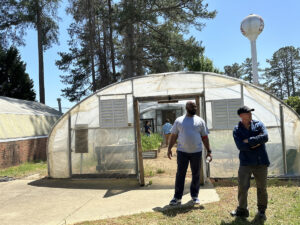News
Jack’s Creek litter trap good for creek, and research
Posted on May 5th, 2022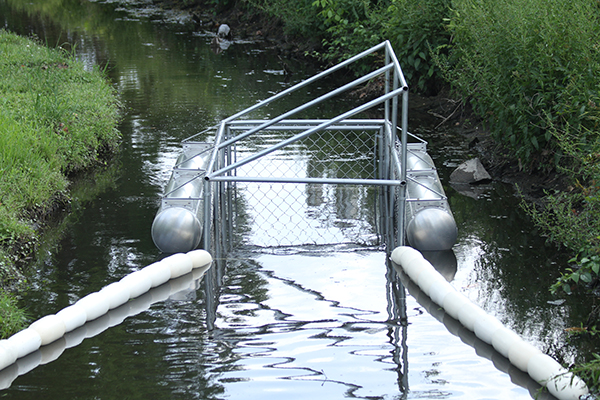
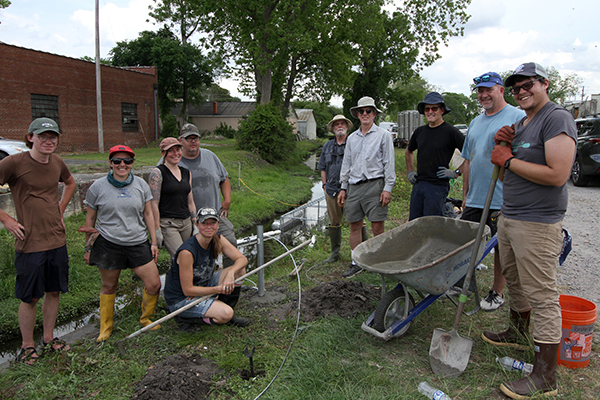
A trash-collection device installed this week on a Washington creek is good for the environment — and research into how the breakdown of plastics impacts waterways and aquatic life.
Wednesday, Sound Rivers’ staff and a crew of volunteers anchored a Trash Trout to the banks of Jack’s Creek, just east of Market Street. The litter trap will collect trash from the creek, whose watershed drains much of the town’s stormwater after heavy rains.
The purpose is twofold: to prevent trash from flowing downstream to the Pamlico River and to gather data for “Improving Human and Ecosystem Health through Microplastic Reduction,” a research study about how plastic pollution affects the environment. Through a $188,000 state grant to Waterkeepers Carolina, 14 Riverkeepers across North Carolina are participating in the two-year-long study, including Sound Rivers’ Pamlico-Tar Riverkeeper Jill Howell and Neuse Riverkeeper Samantha Krop.
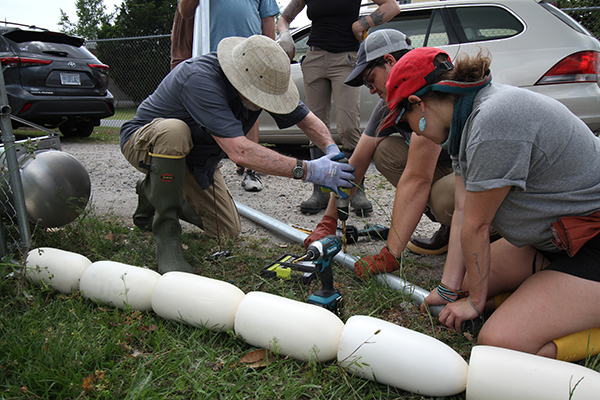
“A lot of this project is about information or research-gathering. We know there’s a ton of plastic pollution in the environment — we see it all the time, in terms of trash in the river, macroplastics like plastic bottles and bags. This will help us understand how macroplastics break down over time and how they settle into the water and the soil,” Howell said. “They don’t go away. They break down into smaller and smaller pieces, but they don’t go away.”
Measuring less than five millimeters long, microplastics are tiny plastic pieces that can be harmful to waterways and aquatic life. As macroplastics break down into microplastics, they become an environmental and public health issue. Since they are so small, microplastics are not picked up by water filtration systems and are often eaten by fish, birds and other aquatic animals, negatively impacting the health of wildlife and, in turn, humans.
“If fish ingest microplastics, and we eat the fish, that means we’re at risk, too,” Howell said.
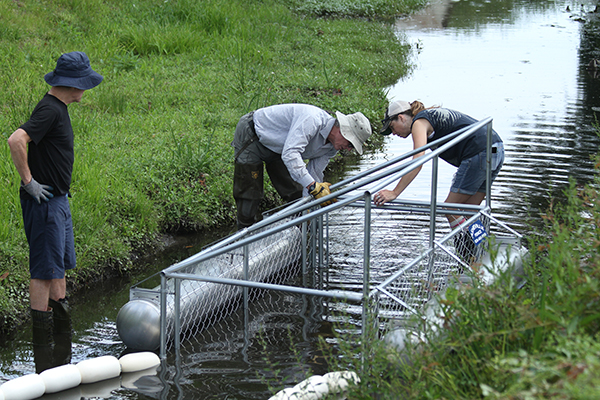
Partnering with University of North Carolina-Wilmington’s Plastic Ocean Project and Duke Law and Policy Clinic, Waterkeepers Carolina, a coalition of North Carolina’s Riverkeepers, launched the study last year, with microplastics pollution sampling in 30 urban and rural waterways. The next step is installing Trash Trouts to collect macroplastics in those locations to better understand the sources of the microplastics found.
“The traps are a way to, one, clean up some trash, and, two, we’ll be able to look and see what kind of trash is in our waterways, what is the actual makeup of the litter and what of that is plastic,” Howell said.
With the help of City of Washington staff, Sound Rivers identified the best location to install the Trash Trout on Jack’s Creek. The device is built to withstand the rigors of flash rain events, allowing water to flow through the trap unimpeded, at the same time capturing larger pieces of trash floating downstream. Once trash is captured, it will be manually removed and “audited,” or sorted.
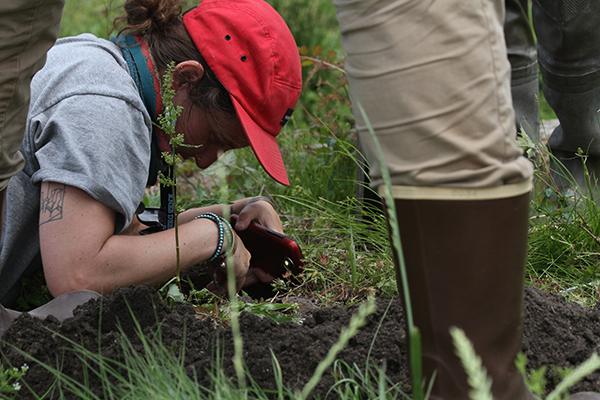
“It’s useful to know what kind of trash is ending up in our waterways, so we know how to prevent it from getting in there in the first place,” Howell said.
Sound Rivers will be installing two more Trash Trouts in the Tar-Pamlico and Neuse watersheds: one on Jack Smith Creek in New Bern and another in the Walnut Creek area of Raleigh.
Howell said Sound Rivers is seeking volunteers to help with the project: those who can regularly check the Trout to see if it’s in need of a clean-out; those willing to wade into the water to pull trash out of the traps; and people to sort the resulting trash. For more information about how to volunteer, email info@soundrivers.org.
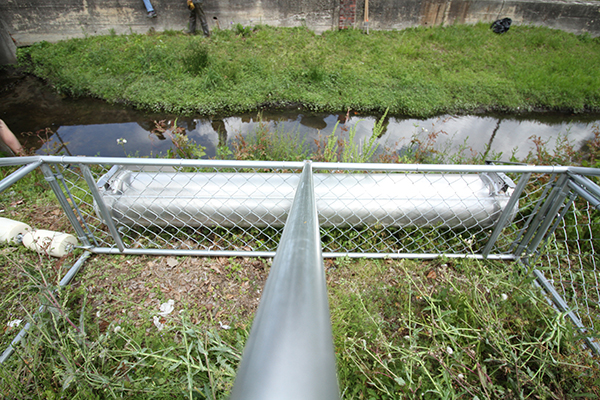

Related News

Riverkeeper weighs in on Raleigh tap-water woes
April 25th 2024
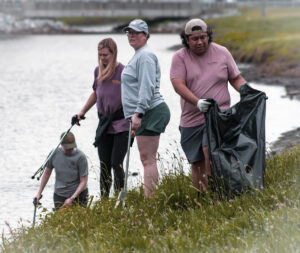
Small cleanup, with a big impact
April 25th 2024
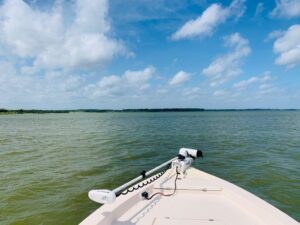
New math moves parts of the Pamlico off impaired waters list
April 25th 2024
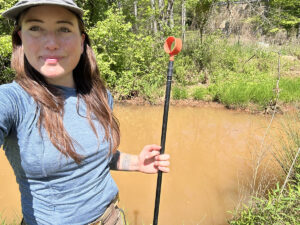
Durham turns down Lick Creek development
April 25th 2024
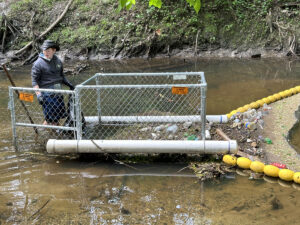
Scout earns volunteer hours with trash trap cleanout
April 25th 2024
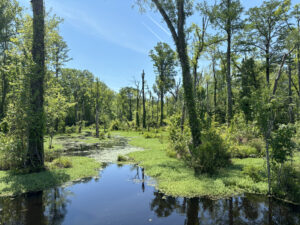
Boat day a Blounts Creek exploration
April 25th 2024
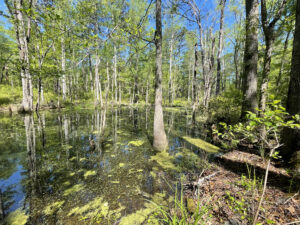
Tell NC to restore wetlands protections!
April 19th 2024
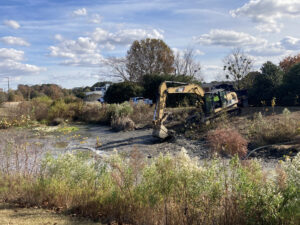
Position available: Stormwater Education Coordinator
April 18th 2024
